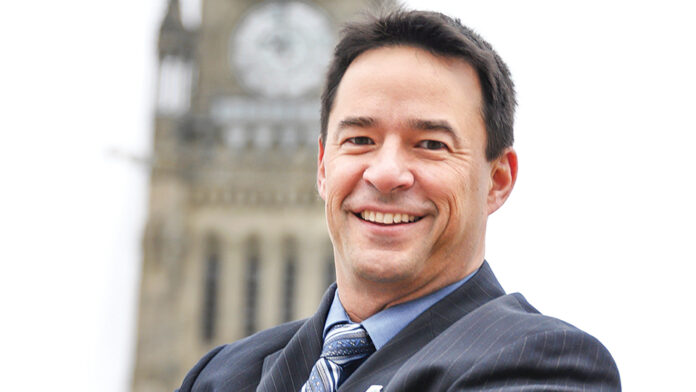By Kevin Lee, CHBA CEO
This last year has no doubt been a great success for CHBA on the government advocacy front.
Back in April, the federal government adopted numerous CHBA recommendations in the federal budget, including 30-year amortizations on insured mortgages for first-time buyers of new construction homes, and investments tied to housing outcomes that directly enable new housing supply and increased infill density. But even as these new measures begin to show positive impact, policymakers cannot simply brush off their hands and stop there – this is only the start.
Negative homebuilder sentiment
Without addressing all the barriers to getting more housing built, the measures set out in the budget will not be enough to create a sound financial case for industry to double housing starts over the next decade. Put simply, more needs to be done, and fast, to close the housing supply gap and help restore affordability.
CHBA’s Q2 Housing Market Index (HMI) showed that builders are expecting weak sales with fewer starts in the months (and in the case of multi-unit buildings, years) ahead. For the eighth consecutive quarter, both the single-family and multi-family HMI showed very negative homebuilder sentiment, with values in the single digits in some provinces (on a scale of 100). Read more about the Q2 HMI on page 36.
Our advocacy and policy work, however, is paying off – we’re getting results and being asked by the government (and the opposition) what should be done next.
In August, I was invited to present at the Prime Minister’s Cabinet Retreat in Halifax. This was a great opportunity to give our recommendations directly to the PM and his cabinet ministers. The government has also asked me to be an expert on the panel for a new industrial strategy for homebuilding. Moreover, last month, CHBA submitted pre-budget recommendations to the House of Commons Standing Committee on Finance for the 2025 federal budget. In all these forums, CHBA outlined the barriers preventing a meaningful boost in homebuilding and offered recommendations for fixing them.
Need for mortgage policy change
The first, and key, priority for CHBA advocacy moving forward is the need for mortgage policy change. Since the sub-prime crisis – which Canada weathered exceptionally well because of the strength of an already established financial system – there has been continued and excessive tightening of mortgage rules by Canada’s banking regulator, the Office of the Superintendent of Financial Institutions (OSFI), which has been mirrored in the insured mortgage space by Finance Canada. This overtightening has locked out well-qualified buyers, and especially first-time buyers, resulting in falling homeownership rates, and less housing supply being built. If buyers can’t buy, then builders can’t build, which is why housing starts are predicted to further contract.
A no-cost way for government to get well-qualified buyers into homeownership and effectively spur homebuilding is to implement a more dynamic stress test (for both insured and uninsured mortgages) that would reduce or eliminate the barrier to accessing mortgages with interest rates at their current high levels. CHBA is also recommending the federal government place more oversight on OSFI in its quest to accelerate the implementation of Basel IV, which are international banking standards that would be counterproductive to efforts to raise investments and improve access to the housing market for Canadians.
CHBA is also stressing the importance of action on rising development charges, excessive red tape, and continuous code changes that are causing project delays and significantly adding to the cost to build new homes. Key recommendations include: Continuing to pressure municipalities to reduce development taxes; a new funding model for the federal, provincial and municipal governments to build housing-supportive infrastructure; removing the red tape brought on by federal (as well as local and provincial) policies like the Underused Housing Tax (UHT); and the adoption of affordability as a core objective of the National Building Code.
More needs on labour
Finally, as Matt McCurrach indicates in his President’s Message, much more needs to be done on labour. In addition to encouraging and supporting more Canadians to join the industry, CHBA is asking government to update the immigration system to ramp up labour capacity in the home building sector.
Members are encouraged to subscribe to Industry Highlights, CHBA’s media aggregator on housing issues with commentary, by emailing communications@chba.ca.












